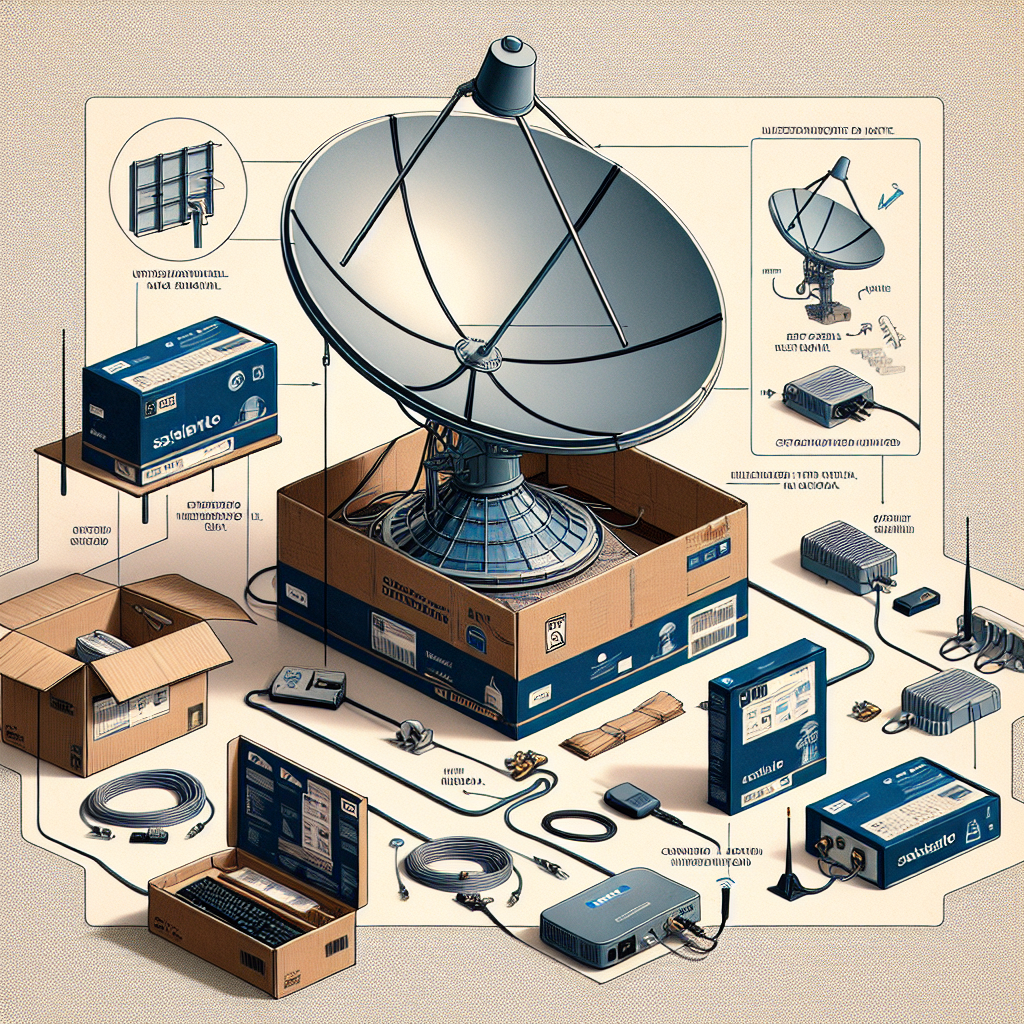In the quest for reliable, high-speed internet, one name has been making waves. That name is Starlink.
Starlink, a project by SpaceX, aims to provide global internet coverage. It's a game-changer, especially for those in rural areas.
Traditional broadband services often fall short in these regions. Starlink, with its satellite technology, promises to bridge this gap.
In this article, we delve into the various Starlink internet plans. We'll compare their features, pricing, and more.
Our goal? To help you decide if Starlink is the right choice for your internet needs. Let's dive in.
Understanding Starlink Internet Service
Starlink is a satellite internet service launched by SpaceX. It's the brainchild of Elon Musk, the visionary behind Tesla and SpaceX.
The service operates using a constellation of low Earth orbit (LEO) satellites. These satellites communicate with ground stations to provide internet connectivity.
Starlink's mission is to provide high-speed internet access across the globe. It's a bold step towards bridging the digital divide, especially in rural and remote areas.
The Importance of Satellite Internet in Rural Areas
Satellite internet, like Starlink, plays a crucial role in rural areas. Traditional broadband services often fail to reach these regions due to infrastructural challenges.
- Satellite internet can reach virtually anywhere, making it a viable solution for rural connectivity.
Starlink's internet plans aim to provide high-speed, reliable internet to these underserved areas. This can open up new opportunities for remote work, education, and healthcare services.
Starlink Internet Plans Overview
Starlink, a project by SpaceX, offers satellite internet plans designed to provide high-speed connectivity globally. The service is currently available in select regions, with plans for further expansion.
- Starlink's internet plans offer impressive download speeds and low latency, making them competitive with traditional broadband services.
However, it's important to note that the performance of Starlink's service can vary. Factors such as weather conditions and line-of-sight to the satellite can impact the quality of the connection. In the next section, we'll delve into the specific features and benefits of each Starlink plan.
Features and Benefits of Each Starlink Plan
Starlink's internet plans are designed to cater to a variety of needs. Whether you're a casual browser or a heavy data user, there's likely a plan that suits you.
- The primary feature of Starlink's service is its high-speed internet connectivity. With download speeds ranging from 50 Mbps to 150 Mbps, users can stream, download, and browse with ease.
Another key benefit is the low latency. This is particularly important for activities like online gaming or video conferencing, where a delay can significantly impact the experience.
- Starlink's low latency, typically between 20ms to 40ms, ensures a smooth, lag-free internet experience.
However, it's worth noting that Starlink's service is still in its beta phase. While many users report positive experiences, others have encountered issues with connectivity and speed. As the service continues to evolve, these issues are expected to be addressed.
Starlink Pricing: What to Expect
When it comes to pricing, Starlink's service is currently available at a flat rate. For $99 per month, users get access to Starlink's high-speed, low-latency internet service.
However, it's important to remember that this price does not include the initial cost of the Starlink Kit. This kit, which includes the necessary equipment for setting up the service, costs $499. While this upfront cost may seem steep, it's a one-time investment for access to a potentially game-changing internet service.
Additional Costs and Considerations
Beyond the monthly fee and the initial cost of the Starlink Kit, there are a few other costs to consider. Shipping and handling for the kit is an additional expense, and the amount can vary depending on your location.
Also, while Starlink's service is advertised as unlimited, it's important to note that the company's Fair Access Policy may slow speeds during times of network congestion. This is a common practice among internet service providers and is something to keep in mind when considering Starlink.
Installation and Setup: What You Need to Know
Setting up Starlink is a fairly straightforward process. The Starlink Kit includes everything you need: a phased array antenna, a mounting tripod, and a modem with a built-in Wi-Fi router.
The antenna, also known as "Dishy McFlatface," needs a clear view of the sky to connect to Starlink's satellites. The Starlink app provides guidance on where to place the dish for the best signal. Remember, the quality of your internet connection will depend on the installation of this dish.
Comparing Starlink to Other Rural Internet Options
When it comes to rural internet options, Starlink is a game-changer. Traditional ISPs often struggle to provide reliable service in remote areas. Satellite internet providers like HughesNet and Viasat are alternatives, but they often have slower speeds and data caps.
Starlink, on the other hand, aims to offer high-speed internet with lower latency. It's a promising solution for rural and remote areas. However, it's important to consider factors like cost, availability, and individual internet needs before making a decision.
Is Starlink Right for You? Making the Decision
Deciding if Starlink is right for you depends on several factors. Consider your location, internet usage, and budget. If you're in a rural area with limited options, Starlink could be a great fit. It's also ideal for those who need high-speed internet for work, study, or entertainment.
However, keep in mind the costs associated with the service. The initial investment for the equipment and the monthly fee might be higher than other providers. But for many, the benefits of reliable, high-speed internet in remote areas outweigh the costs.














.jpg)



0 Comments